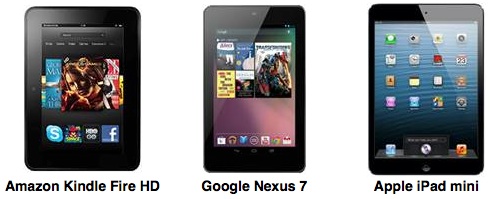iPad Mini Display Is 'Very Capable', But Android Competitors Are Better
The discussion about the new iPad mini has mainly revolved around its display, which is said to account for 43% of the total cost of manufacturing. The display is reportedly based on a new "GF2" technology which allows for thinner display, but it lacks Retina-level resolution to which users have become accustomed in the new iPad and iPhone.
Now Ray Soneira from Display Mate has put the iPad mini’s display through a series of tests, comparing it with Amazon’s Kindle Fire HD, full-size iPad and Google’s Nexus 7. Soneira noted that the display in the smaller iPad is "very capable", but it fall short of competing tablets in several areas. Soneira notes:
“What’s more, the displays on existing mini Tablets from Amazon and Google outperform the iPad mini in most of our Lab tests as documented below in the Shoot-Out Comparison Table. Some of this results from constraints within the iPad product line, and some to realistic constraints on display technology and costs, but much of it is due to a number of poor choices and compromises”.
Among the issues found with iPad min's screen:
- The screen reflectance in the iPad mini measures at 9.0%, meaning that it reflects 41% more ambient light than the Kindle Fire HD’s display and 53% more than Nexus 7's screen. Besides, both competitors provide better contrast under bright ambient light.
- Lower resolution is not a surprise given the cost and energy requirements of Retina-level display with 336 ppi (pixel per inch). The iPad mini’s display at 163 ppi falls short compared to the displays of the Nexus 7 and Kindle Fire HD with 216 ppi.
- The color gamut in the iPad mini’s display measures at 62%, on par with the iPhone 4 and iPad 2, but below iPad 4 and iPhone 5 at 100%, and below the 86% for the Nexus 7 and Kindle Fire HD. However, Soneira noted that due to excellent color management processing iPad mini’s screen offers fairy good color accuracy and picture quality.
Follow us on :

 Leave a comment
Leave a comment